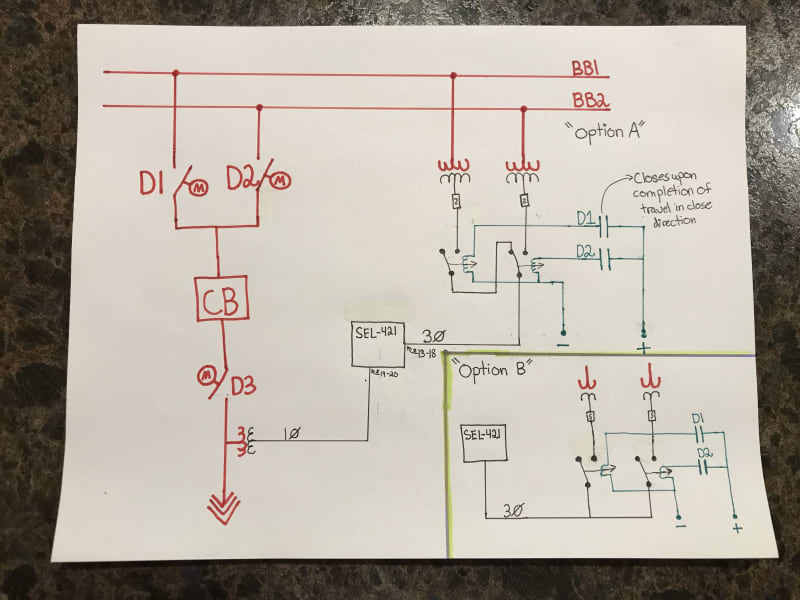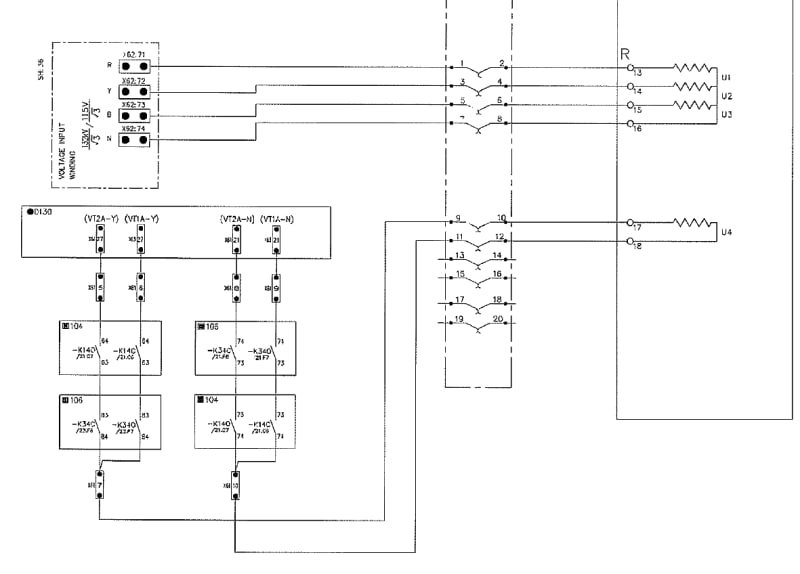For switching analog potential inputs via auxiliary relays, would option A or option B go into practice? Why or why not so?
When a 421 or 311C looses voltage inputs for a few milliseconds, how long does it take for the relay to recover with and without LOP enabled?
If I was to place re-closing and sync check away from the relay in question and use VAZ, VBZ, VCZ (terminals 19-24) for my second voltage input could I configure the relay to "select" analog values based on MOD (open/close) aux contact inputs? And do this seamlessly (without dropping 21p/g protection) when switching between busbars? Could I use freeform logic to configure the relay such for the loss of a normally selected voltage input the relay would automatically select the other provided an input told it the bus coupler and its associated disconnects are closed?
I wish SEL would make a relay with more voltage inputs along with the required logic required with such schemes. My only gripe, other than that I love SEL.

When a 421 or 311C looses voltage inputs for a few milliseconds, how long does it take for the relay to recover with and without LOP enabled?
If I was to place re-closing and sync check away from the relay in question and use VAZ, VBZ, VCZ (terminals 19-24) for my second voltage input could I configure the relay to "select" analog values based on MOD (open/close) aux contact inputs? And do this seamlessly (without dropping 21p/g protection) when switching between busbars? Could I use freeform logic to configure the relay such for the loss of a normally selected voltage input the relay would automatically select the other provided an input told it the bus coupler and its associated disconnects are closed?
I wish SEL would make a relay with more voltage inputs along with the required logic required with such schemes. My only gripe, other than that I love SEL.


![[bigsmile] [bigsmile] [bigsmile]](/data/assets/smilies/bigsmile.gif) I was hoping to avoid SOTF, but, that might be a much better alternative.
I was hoping to avoid SOTF, but, that might be a much better alternative. 
![[chicken] [chicken] [chicken]](/data/assets/smilies/chicken.gif)
